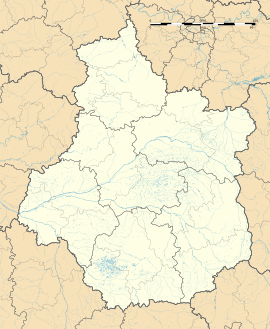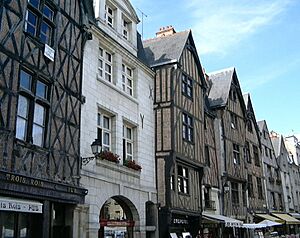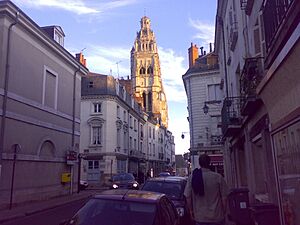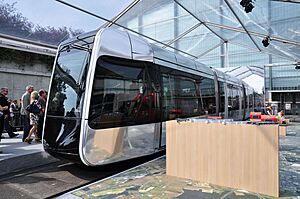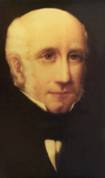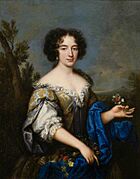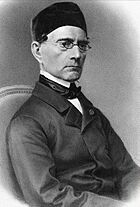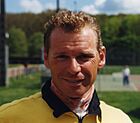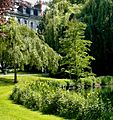Tours facts for kids
Quick facts for kids
Tours
|
|||
|---|---|---|---|
|
Prefecture and commune
|
|||
|
City Hall
Old buildings in Place Plumereau
Tours Cathedral
Hôtel Goüin
Basilica of Saint Martin
Wilson Bridge over the Loire River
Prébendes d'Oé garden
|
|||
|
|||
| Country | France | ||
| Region | Centre-Val de Loire | ||
| Department | Indre-et-Loire | ||
| Arrondissement | Tours | ||
| Canton | Tours-1 Tours-2 Tours-3 Tours-4 |
||
| Intercommunality | Tours Métropole Val de Loire | ||
| Area
1
|
34.7 km2 (13.4 sq mi) | ||
| • Urban
(2018)
|
684.9 km2 (264.4 sq mi) | ||
| • Metro
(2018)
|
3,631.6 km2 (1,402.2 sq mi) | ||
| Population
(2022)
|
138,668 | ||
| • Rank | 26th in France | ||
| • Density | 3,996/km2 (10,350/sq mi) | ||
| • Urban
(2018)
|
359,992 | ||
| • Urban density | 525.61/km2 (1,361.33/sq mi) | ||
| • Metro
(2018)
|
516,973 | ||
| • Metro density | 142.3541/km2 (368.695/sq mi) | ||
| Demonym(s) | Tourangeau (masculine) Tourangelle (feminine) |
||
| Time zone | UTC+01:00 (CET) | ||
| • Summer (DST) | UTC+02:00 (CEST) | ||
| INSEE/Postal code |
37261 /37000, 37100, 37200
|
||
| Elevation | 44–119 m (144–390 ft) | ||
| 1 French Land Register data, which excludes lakes, ponds, glaciers > 1 km2 (0.386 sq mi or 247 acres) and river estuaries. | |||
Tours is a large city in the Centre-Val de Loire region of France. It is the main city, or prefecture, of the department called Indre-et-Loire. In 2018, about 136,463 people lived in Tours itself. The larger area around the city, called the metropolitan area, had about 516,973 people.
Tours is located along the lower part of the Loire River, between the city of Orléans and the Atlantic coast. Long ago, the Roman Emperor Augustus founded the city and named it Caesarodunum. It was home to one of the biggest Roman amphitheaters. Tours is famous for the Battle of Tours in 732 AD, a very important event in history.
Many famous people, like Saint Martin and Gregory of Tours, came from Tours. The city was once part of Touraine, an old French province. Tours was also the first city in France to have a silk industry. Later, King Louis XI made it a royal capital.
Today, Tours is known as "Le Petit Paris" (Little Paris) and a "garden city" because of its many green spaces. Its historic center is recognized by UNESCO. Tours is also a university city with over 30,000 students. It's a great place for food lovers, with local specialties like rillettes, rillons, Touraine wines, and nougats. The city is also the finish line for the annual Paris–Tours bicycle race.
Contents
City Name History
Some people believe the name "Tours" comes from a person named Turonus. The story says Turonus was buried in Tours, and the city grew around his grave.
City History
Early Times
In ancient Gallic times, Tours was an important place to cross the Loire River. It became part of the Roman Empire in the 1st century AD. The Romans first called it Caesarodunum, meaning "hill of Caesar." Later, in the 4th century, its name changed to Civitas Turonum, based on the original Gallic name, Turones. This eventually became "Tours." The large Tours Amphitheatre was built around this time.
Around 380–388 AD, Tours became a major city in the Roman province of Lugdunum. It was an important center for areas like Maine, Brittany, and the Loire Valley. Saint Martin, a bishop who famously shared his coat with a beggar, was a key figure in the city. His importance made Tours a major stop for pilgrims traveling to Santiago de Compostela during the Middle Ages.
Middle Ages
In the 6th century, Gregory of Tours, a famous writer, rebuilt a cathedral that had burned down. The monastery of Saint Martin received strong support from the Frankish king, Clovis I. This greatly increased the influence of the saint, the abbey, and the city. In the 9th century, Tours was a center of learning during the Carolingian Renaissance, thanks to Alcuin, a scholar and abbot of Marmoutier Abbey.
In 732, a large army of Muslim horsemen from Al-Andalus (Spain) advanced into France. They were stopped at the Battle of Tours by Charles Martel and his army. This battle was very important because it prevented an Islamic conquest of France.
In 845, Tours successfully defended itself against the Viking chief Haesten. However, in 852, the Vikings returned and attacked Tours and Marmoutier Abbey.
During the Middle Ages, Tours had two main parts. The "City" in the east had the cathedral and the castle. The "new city" in the west grew around the Abbey of Saint Martin and became the main economic center. These two parts were connected in the 14th century.
Tours became the capital of the county of Touraine. It was the capital of France when King Louis XI lived there. Tours and Touraine remained a royal home until the 16th century. During the Renaissance, many beautiful private homes and castles, known as the Châteaux of the Loire, were built. King Louis XI also brought the silk industry to Tours, which still exists today.
Later Centuries
In the 16th century, King Charles IX visited Tours. During the French Wars of Religion, the city's leaders protected Protestants from harm. However, when the royal court moved back to Paris, Tours slowly became less important.
The arrival of the railway in the 19th century helped Tours grow again. It became an important travel hub. The city expanded south into a new area called the Prébendes. Tours became a busy city with a strong service industry. During the Franco-Prussian War, Tours briefly served as the temporary capital of France.
World Wars
Tours was greatly affected by the First World War. In 1917, 25,000 American soldiers arrived. They set up factories, repair shops, and a military hospital. Tours became a military town. The Wilson Bridge over the Loire, opened in 1918, is named after the American President.
In 1920, a major meeting called the Congress of Tours took place in the city. This led to the creation of the French Communist Party. Ho Chi Minh, a Vietnamese nationalist who later became a famous leader, was one of the first members of this party.
Tours also suffered a lot during the Second World War. From June 10 to 13, 1940, Tours was the temporary seat of the French government. German attacks caused a huge fire that destroyed part of the city center. The Wilson Bridge was blown up to slow the German advance, which also cut off the city's water supply, making it impossible to fight the fire. Many people had to flee. More air raids by Allied forces in 1944 caused many deaths.
After the Wars
After the war, a plan was made to rebuild the city center. The main road, la rue Nationale, was widened. Jean Royer, who was mayor for 36 years, helped save the old town from being destroyed. He created one of the first Conservation Areas, which helped protect historic city centers. In the 1970s, he also expanded the city by changing the course of the Cher River. In 1970, the François Rabelais University was founded in the city center.
Jean Germain became mayor in 1995. He focused on improving the city's finances and quality of life. This included restoring old buildings, improving public transport, and supporting cultural activities.
Climate
Tours has a mild oceanic climate. Summers are warm, often reaching 25°C or more. Winters are mild because of air coming from the Atlantic Ocean. The entire Loire Valley is known for its clear air and beautiful castles.
| Climate data for Tours (1991–2020 averages) | |||||||||||||
|---|---|---|---|---|---|---|---|---|---|---|---|---|---|
| Month | Jan | Feb | Mar | Apr | May | Jun | Jul | Aug | Sep | Oct | Nov | Dec | Year |
| Record high °C (°F) | 16.9 (62.4) |
22.1 (71.8) |
25.3 (77.5) |
29.2 (84.6) |
31.8 (89.2) |
39.1 (102.4) |
40.8 (105.4) |
39.8 (103.6) |
35.5 (95.9) |
31.1 (88.0) |
22.3 (72.1) |
18.5 (65.3) |
40.8 (105.4) |
| Mean daily maximum °C (°F) | 7.7 (45.9) |
9.0 (48.2) |
12.9 (55.2) |
16.0 (60.8) |
19.6 (67.3) |
23.4 (74.1) |
25.9 (78.6) |
26.0 (78.8) |
22.1 (71.8) |
17.0 (62.6) |
11.4 (52.5) |
8.1 (46.6) |
16.6 (61.9) |
| Daily mean °C (°F) | 5.1 (41.2) |
5.6 (42.1) |
8.6 (47.5) |
11.0 (51.8) |
14.5 (58.1) |
18.0 (64.4) |
20.2 (68.4) |
20.2 (68.4) |
16.8 (62.2) |
13.0 (55.4) |
8.3 (46.9) |
5.5 (41.9) |
12.2 (54.0) |
| Mean daily minimum °C (°F) | 2.5 (36.5) |
2.3 (36.1) |
4.3 (39.7) |
6.0 (42.8) |
9.4 (48.9) |
12.6 (54.7) |
14.4 (57.9) |
14.3 (57.7) |
11.4 (52.5) |
9.0 (48.2) |
5.3 (41.5) |
2.9 (37.2) |
7.9 (46.2) |
| Record low °C (°F) | −17.4 (0.7) |
−14.2 (6.4) |
−10.3 (13.5) |
−3.4 (25.9) |
−0.6 (30.9) |
2.6 (36.7) |
4.3 (39.7) |
4.8 (40.6) |
0.9 (33.6) |
−2.3 (27.9) |
−7.1 (19.2) |
−18.5 (−1.3) |
−18.5 (−1.3) |
| Average precipitation mm (inches) | 63.0 (2.48) |
52.4 (2.06) |
48.7 (1.92) |
53.0 (2.09) |
57.7 (2.27) |
53.2 (2.09) |
46.6 (1.83) |
44.0 (1.73) |
51.8 (2.04) |
66.0 (2.60) |
69.3 (2.73) |
72.1 (2.84) |
677.8 (26.69) |
| Average precipitation days | 11.0 | 9.8 | 9.3 | 8.9 | 9.0 | 7.6 | 6.7 | 6.6 | 7.5 | 9.8 | 11.4 | 11.5 | 109.0 |
| Average snowy days | 2.4 | 2.9 | 1.8 | 0.7 | 0.1 | 0.0 | 0.0 | 0.0 | 0.0 | 0.0 | 1.0 | 1.7 | 10.6 |
| Average relative humidity (%) | 87 | 84 | 79 | 74 | 77 | 75 | 72 | 73 | 77 | 84 | 87 | 89 | 79.8 |
| Mean monthly sunshine hours | 68.4 | 95.2 | 148.8 | 187.3 | 214.2 | 228.5 | 247.1 | 237.7 | 191.3 | 122.9 | 78.9 | 64.6 | 1,884.8 |
| Source 1: Météo France | |||||||||||||
| Source 2: Infoclimat.fr (humidity and snowy days, 1961–1990) | |||||||||||||
Famous Places to See
Tours Cathedral
The Tours Cathedral, dedicated to Saint Gatien, was started around 1170. It replaced an older cathedral that burned down. The lower parts of the western towers are from the 12th century. The rest of the front, built in the 15th century, has very detailed Flamboyant Gothic style. This was finished around the same time the Renaissance was influencing the design of the châteaux in Touraine.
Other Interesting Places
- City Hall
- Jardin botanique de Tours, the city's botanical garden
- Musée des Beaux-Arts de Tours, an art museum
- Hôtel Goüin, a historic mansion
- Château de Tours, a castle
- Basilique St-Martin
- Place Plumereau, a lively square in the old town with restaurants
- Grand Théâtre, home to the Opéra de Tours
- Tour Charlemagne, a tower
Language History
Before the French Revolution, people in Tours were known for speaking the "purest" French. This was because the French royal court lived in Touraine between 1430 and 1530. French became the official language of the kingdom during this time.
In 813, a meeting called the Third Council of Tours decided that priests should preach in different languages. This was because common people could no longer understand classical Latin. This is seen as an early official recognition of the French language, separate from Latin.
Later, laws were made to ensure that legal documents and official papers were written in French to avoid confusion.
About the City
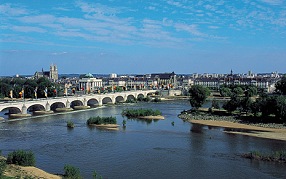
Tours is often called "Le Jardin de la France" (The Garden of France) because it has many parks. The city is located between two rivers: the Loire to the north and the Cher to the south. Buildings in Tours are typically white with blue slate roofs. This style is common in northern France.
Tours is famous for its old medieval district, called le Vieux Tours. This area has well-preserved half-timbered buildings and la Place Plumereau, a square full of busy pubs and restaurants. The Boulevard Beranger crosses the Rue Nationale at the Place Jean-Jaures, where weekly markets are held.
Tours has many bridges over the Loire River. One famous bridge, Wilson Bridge, collapsed in 1978 but was rebuilt.
In the garden of the old Archbishop's Palace (now the Musée des Beaux-Arts), there is a huge cedar tree. People say Napoleon planted it. The garden also has a stuffed elephant named Fritz. Fritz escaped from a circus in 1902, and the city decided to honor him by having him preserved.
Tours is home to the University of Tours. It also hosts an important international choir competition called Florilège Vocal de Tours.
Population
The population numbers below are for the city of Tours itself. The city grew by absorbing nearby towns like Saint-Étienne in 1845 and Sainte-Radegonde-en-Touraine and Saint-Symphorien in 1964.
| Historical population | |||||||||||||||||||||||||||||||||||||||||||||||||||||||||||||||||||||||||||||||||||||||||||||||||||||||||||||||||||
|---|---|---|---|---|---|---|---|---|---|---|---|---|---|---|---|---|---|---|---|---|---|---|---|---|---|---|---|---|---|---|---|---|---|---|---|---|---|---|---|---|---|---|---|---|---|---|---|---|---|---|---|---|---|---|---|---|---|---|---|---|---|---|---|---|---|---|---|---|---|---|---|---|---|---|---|---|---|---|---|---|---|---|---|---|---|---|---|---|---|---|---|---|---|---|---|---|---|---|---|---|---|---|---|---|---|---|---|---|---|---|---|---|---|---|---|
|
|
||||||||||||||||||||||||||||||||||||||||||||||||||||||||||||||||||||||||||||||||||||||||||||||||||||||||||||||||||
| Source: EHESS and INSEE (1968–2017) | |||||||||||||||||||||||||||||||||||||||||||||||||||||||||||||||||||||||||||||||||||||||||||||||||||||||||||||||||||
Transportation
Tours has excellent train connections, including high-speed TGV trains, and major highways. This makes it a great starting point for tourists visiting the Loire Valley and its royal châteaux (castles).
Tours is on a main TGV line. You can travel to Bordeaux in about an hour and forty minutes. From there, the line goes along the Mediterranean coast to Spain and Barcelona. There are also lines to Lyon, Strasbourg, and Lille. It takes less than an hour to get from Tours to Paris by TGV. You can also reach Charles de Gaulle Airport in about an hour and a half. Tours has two main train stations: Gare de Tours (the central station) and Gare de Saint-Pierre-des-Corps (for trains that don't end in Tours).
Tours Loire Valley Airport connects the Loire Valley to other European cities.
Tours used to have trams and trolleybuses. Tram service returned to the city in 2013 with a new tram system. A second tram line is planned for 2025. There is also a bus service. The tram and bus networks share a ticketing system.
Sports
The city's main football club, Tours FC, stopped playing in 2025 after 106 years. Tours also has a second team, CCSP Tours. Their home stadium is the Stade des Tourettes.
Tours has been the finish line for Paris–Tours, a famous road cycling race held almost every October since 1896.
Tours also has a volleyball club called the Tours VB.
Religious Importance
Tours is a special place for Catholics who follow the devotion to the Holy Face of Jesus and the adoration of the Blessed Sacrament. In 1843, Sister Marie of St Peter of Tours reported a vision that started the devotion to the Holy Face of Jesus. This devotion is about making up for the insults Christ suffered.
Venerable Leo Dupont, also known as The Holy Man of Tours, lived in Tours around the same time. In 1849, he started the nightly adoration of the Blessed Sacrament, which spread across France. He also began burning a lamp continuously before a picture of the Holy Face of Jesus. This devotion was officially approved by Pope Pius XII in 1958. The Oratory of the Holy Face in Tours welcomes many pilgrims each year.
Tours was also the center of activity for St. Martin of Tours. The important Battle of Tours in 732 is often seen as a key victory that helped shape Europe.
Famous People from Tours
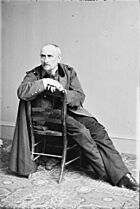
Public Service
- Berengarius of Tours (999–1088), a theologian.
- Louise de la Vallière (1644–1710), a noblewoman.
- Régis de Trobriand (1816–1897), an American military officer and author.
- Jean Royer (1920–2011), a former Minister and Mayor of Tours.
- Catherine Colonna (born 1956), a French diplomat and politician.
Arts


- Jean Fouquet (1420–1481), a painter.
- François Clouet (around 1510 – 1572), a French Renaissance painter.
- Abraham Bosse (1604–1676), an artist known for etchings.
- Philippe Néricault Destouches (1680–1754), a playwright.
- Honoré de Balzac (1799–1850), a famous novelist.
- Jacques Villeret (1951–2005), an actor.
- Isabelle Geffroy (born 1980), a singer known as Zaz.
Science and Business
- Gabriel Lamé (1795–1870), a mathematician.
- Félix Dujardin (1801–1860), a biologist.
- Armand Trousseau (1801–1867), a doctor.
- Émile Delahaye (1843–1905), who founded an automobile company.
Sports
- Pascal Hervé (born 1964), a road racing cyclist.
- Xavier Gravelaine (born 1968), a former football player for France.
- Abdou Diallo (born 1996), a football player for Senegal.
Sister Cities
Tours is connected with these cities around the world:
 Mülheim, Germany (since 1962)
Mülheim, Germany (since 1962) Segovia, Spain (since 1972)
Segovia, Spain (since 1972) Parma, Italy (since 1976)
Parma, Italy (since 1976) Luoyang, China (since 1982)
Luoyang, China (since 1982) Trois-Rivières, Canada (since 1987)
Trois-Rivières, Canada (since 1987) Takamatsu, Japan (since 1988)
Takamatsu, Japan (since 1988) Brașov, Romania (since 1990)
Brașov, Romania (since 1990) Minneapolis, Minnesota USA (since 1991)
Minneapolis, Minnesota USA (since 1991)
Images for kids
-
Looking towards central Tours from the north bank of the Loire, near the Pont Mirabeau.
See also
 In Spanish: Tours para niños
In Spanish: Tours para niños
- Bishop of Tours
- Tours municipal library












